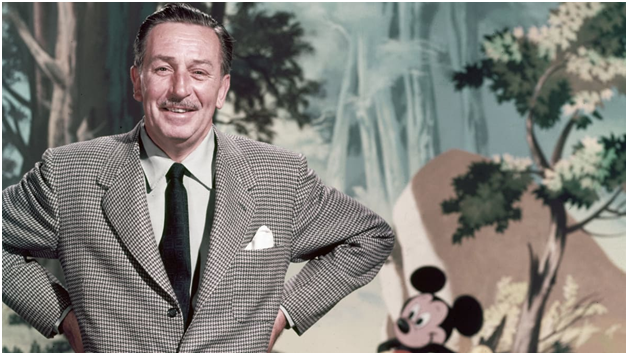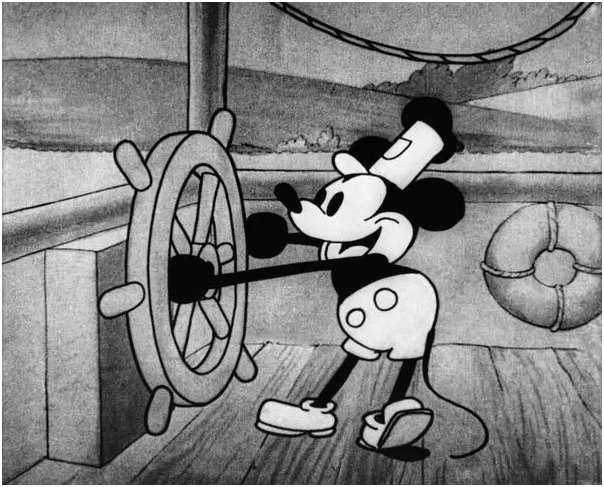From Drawings to Theme Parks: How did one man create the real-life version of his magical fantasy world? [Monday: Marketing Marvels]

Miles Everson’s Business Builder Daily speaks to the heart of what great marketers, business leaders, and other professionals need to succeed in advertising, communications, managing their investments, career strategy, and more.
A Note from Miles Everson:
Hi, everyone. Happy Monday!
We hope you’re having a great day so far.
Let’s kickstart the week with our daily dose of inspiration from the world’s “Marketing Marvels.” Each Monday, we feature these successful people because we believe it’s good for us to gain motivation from them by learning about their work, insights, and experiences.
For today’s article, we’ll talk about a person who has shown outstanding performances in the animation, entertainment, and theme park industries.
Curious to know who we’re referring to?
Keep reading to find out.
Miles Everson
CEO, MBO Partners
Chairman of the Advisory Board, The I Institute
Marketing Marvels
What’s the first thing that comes to your mind when you hear the word, “Disneyland?”
Mickey Mouse?
Magic?
Adventure?
It’s easy to associate these things with the popular Disney theme parks located in the US, Hong Kong, Japan, France, and China.
… but have you ever wondered how these amusement centers came to life and became an iconic brand in the industry?
It’s because of the brilliance, creativity, passion, and perseverance of this man:
Walter Elias “Walt” Disney! (December 5, 1901 to December 15, 1966)

Photo from History.com
Walt Disney was an entrepreneur, animator, writer, voice actor, and film producer. As a pioneer of the American animation industry, he introduced several developments in the production of cartoons.
As a film producer, he holds the record for most Academy Awards earned and nominations by an individual, having won 22 Oscars from 59 nominations. Some of his films are included in the US Library of Congress’ National Film Registry.
The Man Behind The “Magic”
Born in Chicago in 1901, Disney developed an early interest in art and drawing. He took art classes as a boy and at the age of 18, he got his first job as a commercial illustrator.
In the early 1920s, he moved to California and set up the Disney Brothers Studio with his brother Roy. With the help of American animator Ub Iwerks, Disney developed the cartoon character Mickey Mouse in 1928.

Photo from The New York Times
As the studio grew, Disney became more adventurous and innovative in his drawings, introducing synchronized sound, full-color three-strip Technicolor, feature-length cartoons, and other technical developments.
These improvements were seen in some of his first animated shows such as:
- Snow White and The Seven Dwarfs
- Pinocchio
- Fantasia
- Dumbo
- Bambi
In the 1950s, Disney further expanded his empire into the amusement park industry, and in July 1955 he opened Disneyland in Anaheim, California. He funded that theme park by making money out of his TV programs like “Walt Disney’s Disneyland” and “The Mickey Mouse Club.”
Until today, Disney remains an important figure in the history of animation and in the cultural history of the US. His film work continues to be shown and adapted, his studio and company maintain high standards in their production of popular entertainment, and his Disneyland theme parks have grown in size and number to attract visitors in several countries.

Seeing Disney’s success in the animation, entertainment, and theme park industries, what can you learn from him as a business owner or marketer?
- Never give up.
Disney (the person) didn’t achieve overnight success. Prior to establishing the Disney Brothers Studio, he founded several other companies that went bankrupt. He also tried creating advertisements that failed due to lack of revenue.
BUT!
Instead of giving in or giving up, Disney continued to try new things until he made his BIG break a.k.a. Mickey Mouse and Disneyland.
As he said,
“All the adversity I’ve had in my life, all my troubles and obstacles, have strengthened me. You may not realize it when it happens, but a kick in the teeth may be the best thing in the world for you.”
- Be a problem solver.
Disney was an observant man. He was constantly looking for ways to solve a problem and how it could be an opportunity in the marketplace.
Example: When he took his daughter to a park, he noticed the rides were dirty and in bad condition. Additionally, the people operating the rides were rude!
So, when he set out to open his own theme park, he made sure his business was nothing like that unpleasant park. He worked with his staff in making Disneyland a safe and clean place where parents could take their kids to bond and have fun.
- Be willing to reinvent yourself.
This quality is tied in with Disney’s never-give-up personality. Despite experiencing losses and failures, he continued giving his best in everything he did. He was willing to start anew if that would mean another opportunity to succeed and make a name in his field of expertise.
The bottom line?
Never give up… and after that, open yourself to countless opportunities to become better at what you do.
Who knows? The outcome may be sweeter and more magical the next time around!
- Surround yourself with talent.
Disney admitted he was not the most talented at drawing or animation. He knew his strengths and weaknesses and was able to hire and work with people who could help him achieve his goals.
Fun fact: The person who animated the first Mickey Mouse wasn’t actually Disney but Iwerks. However, the good thing about Disney was while he wasn’t as good at animation as Iwerks, he had a vision. He worked harmoniously with Iwerks to bring the iconic cartoon character to life.
Take note of the keyword―harmoniously. You need to have good working relationships with your colleagues so you’ll all achieve your goals as individuals and as a team.
- Diversify your resources and skill sets.
Disney was a smart man who knew how to keep his business going. After building a successful animation studio, he expanded his reach in the media and entertainment industry, amusement parks, and other products.
If he was not so much of a visionary, he would have been satisfied with just an animation studio. However, that would not have created the kind of success his entire Disney (the brand) empire had.
According to Walt Disney,
“Times and conditions change so rapidly that we must keep our aim constantly focused on the future.”
… and so as someone who’s in the business and marketing industries, you have to keep looking at ways to grow and diversify your brand!
—
Disney’s childhood was anything but idyllic. His father was a strict disciplinarian who frequently administered “corrective” beatings that became part of the family’s daily life.
That’s why drawings became young Disney’s form of escape. With pen and ink, he created his own little fantasy world where life was always beautiful and people were always happy.
Who would’ve thought that with vision, creativity, and inspiration, he would be able to fund and construct the 185-acre Disneyland, the real-life version of his fantasy world?
Until now, this theme park has been dubbed as “The Happiest Place on Earth.”
Disney deserves a round of applause for all his creations and contributions in the industry!
Through his pioneering innovations, management, and the iconic cartoon characters he brought to life, his entire empire―The Walt Disney Company―has continued to grow and spread joy, magic, and adventure to countless people around the world.
We hope his life and experiences inspire you to also do your best in your field of expertise!
(This article is from The Business Builder Daily, a newsletter by The I Institute in collaboration with MBO Partners.)
About The Dynamic Marketing Communiqué’s
“Monday Marketing Marvels”
Too often, industry experts and the marketing press sing the praises of some brand or company’s marketing strategy.
… only for the audience to later find out that its product was a flop, or worse, that the brand or company went bankrupt.
The true ROI in marketing can’t be separated from the business as a whole.
What good is a marketing case study if one can’t prove that the company’s efforts actually paid off?
At the end of the day, either the entire business is successful or it isn’t. And the roles of marketing and communication are always paramount to that success.
Every Monday, we publish a case study that highlights the world’s greatest marketing strategies, marketers, and communicators.
However, the difference between our articles and the numerous ones out there is that we will always make certain that the firm really did generate and demonstrate earning power worthy of study in the first place (compliments of Valens Research’s finance group) in keeping with a person’s leadership skills in the area of marketing and/or communication.
We’ll also study the greatest marketing fails and analyze what they did wrong, or what they needed to improve. We all make our mistakes, but better we learn from others’ mistakes—and earlier, rather than later.
Hope you found this week’s marketing marvel interesting and helpful.
Stay tuned for next week’s Monday Marketing Marvels!
Cheers,
Kyle Yu
Head of Marketing
Valens Dynamic Marketing Capabilities
Powered by Valens Research
www.valens-research.com




